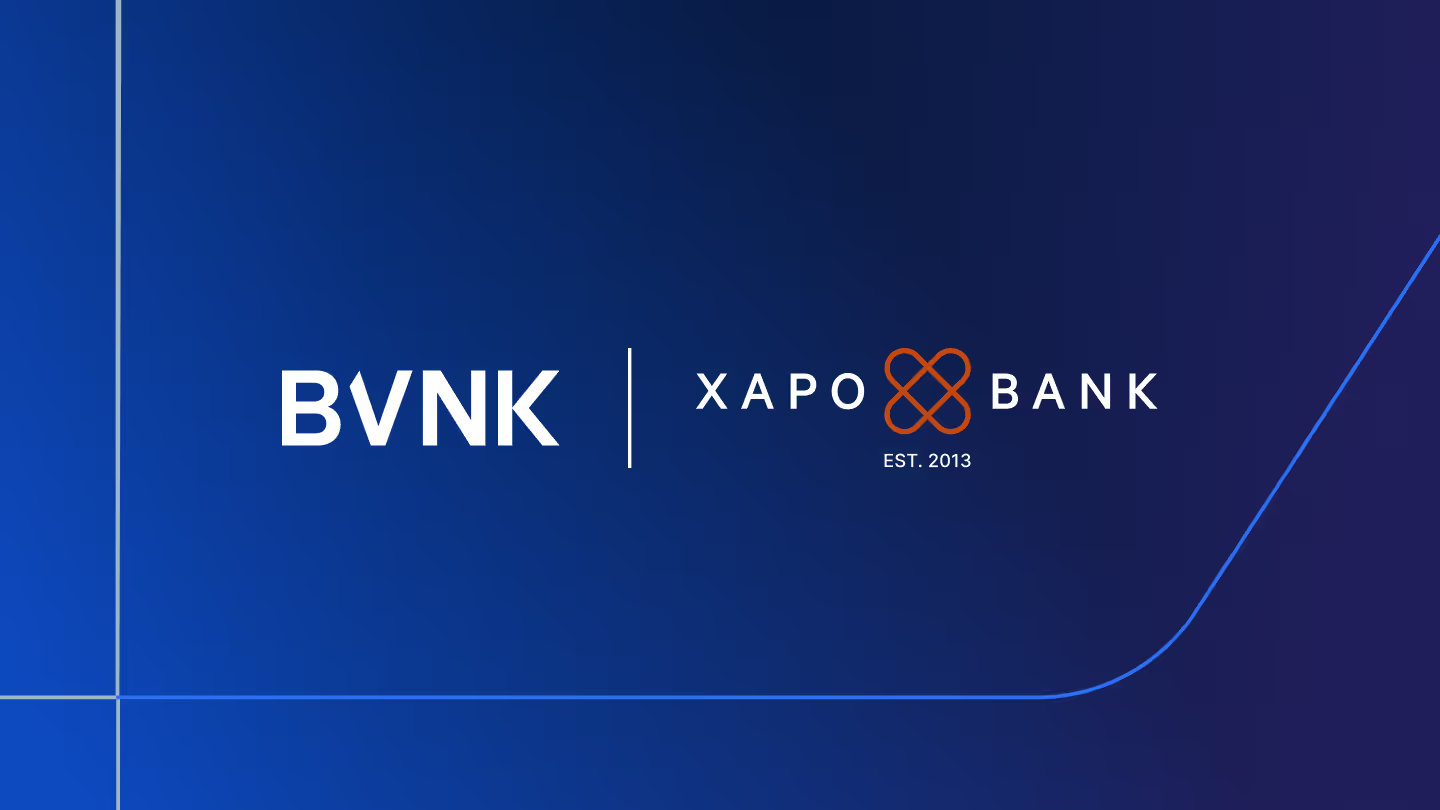Blockchain payments: a step by step guide
A guide to how a payment is completed on the blockchain and the crypto payment experience.
Over the past decade, there have been various use cases for distributed ledger technology (DLT), from digital asset investing, to smart contracts to new models of ownership for the creator economy and more.
One use case gaining global traction is blockchain payments: DLT gives businesses new rails for moving money – faster, more cheaply, and from places that have been traditionally hard to reach.
Still, for many businesses, DLT is complex. Concepts of blockchains, keys, miners and mempools seem a million miles away from the traditional banking and financial apparatus they are familiar with.
To consider how your business could benefit from payments that run on distributed ledger technology (DLT), you first need to understand the mechanics.
In this guide, we’ll explain how blockchain payments work and walk you through the journey of a transaction – on the frontend and back.
How do blockchain payments work?
1. A user broadcasts a request to send some cryptocurrency.
2. A node receives the request and verifies the transaction by communicating with other nodes to confirm that they also see the request.
3. Verified transactions are added to a waiting area called a mempool. Here, miners select transactions to be included in a block.
4. By dedicating computational power to solving a cryptographic equation, a miner wins the right to “mine” their block of transactions and add it to the blockchain.
5. The rest of the network nodes add this new block to their copies of the blockchain. They verify among each other that they each have the same new block added.
6. The transaction is complete – it has been witnessed by thousands of independent nodes globally and is publicly verifiable.
We’ll explain these concepts in detail below.

What is distributed ledger technology?
Distributed ledger technology (DLT) is the infrastructure that blockchains are built on. It’s a decentralised database that allows multiple parties to securely share and validate data, enabling transparent and tamper-proof record keeping without relying on a central authority like a bank. DLT has the potential to transform the payment industry by enabling faster, more secure, more accessible and cost-effective transactions.
What is a blockchain?
While a blockchain is a type of DLT, not all DLTs are blockchains. Blockchain is a specific implementation of DLT that uses cryptographic hashing and consensus mechanisms to create a linear, tamper-proof chain of blocks. For cryptocurrencies, a blockchain is a distributed ledger that records every single transaction ever made. Examples of blockchains include Ethereum, Solana and Bitcoin.
DLT is a broader term that includes different technologies and architectures, including blockchains, directed acyclic graphs and others.
What is cryptocurrency?
A cryptocurrency, also known as a crypto-currency or crypto, is a type of digital currency native to blockchains. It operates as a means of exchange over a decentralised computer network, and is not supported or maintained by any one central organisation, such as a bank or government. Examples include BTC and ETH, or stablecoins like USDT.
Owning cryptocurrency, for example bitcoins, really means owning a bitcoin address, which has a balance recorded on the blockchain.
Cryptocurrencies use DLT infrastructure to enable secure, decentralised and transparent transactions.
What are miners?
Miners are network participants (powerful computers) that dedicate computing power (known as ‘hash power’) to verifying new blocks. Different blockchains use different mechanisms for this. The most common two are ‘proof of work’ (PoW) and ‘proof of stake’ (PoS).
With PoW, miners race to compute a mathematical puzzle. The first to solve it ‘wins’ the block. Blockchains using PoW include Bitcoin, Litecoin and Dogecoin.
With PoS miners pledge a ‘stake’ of coins for the chance to be randomly chosen as the block validator. The more coins staked, the better the chances. Blockchains using PoS include Ethereum 2.0 (ETH2) Cardano, Solana, and Tezos.
Regardless of the consensus mechanism, a miner that validates a new block will be remunerated with a combination of newly minted coins and a processing fee.
The purpose of miners is to provide security to the network. It's expensive to be a miner, which acts as a disincentive for bad actors and spam.
What are nodes?
Nodes are computers that witness and verify every transaction that takes place on a blockchain. There are thousands of nodes spread across the world that all store a copy of a specific blockchain’s ledger. If we're talking about Bitcoin, for example, there are nodes in Malta or nodes in the UK that all have the same copy of the Bitcoin ledger on them.
Nodes are responsible for talking to one another and making sure that they're all seeing the same transaction in order to reach a majority consensus on which payments are legitimate.
Public address vs private keys
On a blockchain, coins are exchanged between users using public addresses (also known as public keys). Think of these as bank account numbers. A public address is a unique string of cryptographically generated characters, frequently displayed in QR code format for mobiles.

Here’s an example of an Ethereum public address:
0x9581d30a99e23e75330cf1fc4a537dbd3f56d226
Depending on the network used, the public address either stays the same (in the case of Ethereum), or changes for each transaction (in the case of Bitcoin). In addition, each transaction receives a unique transaction hash that serves as a proof that a transaction was validated and added to the blockchain. This provides an element of privacy to users.
Private keys are what you need to access and spend any funds that have been sent to your public address. But unlike a public address, it should never be shared. A private key is like a pin number; in the wrong hands, someone can take everything you own.
Most people ‘remember’ their private key with a code consisting of 12-24 words, which the wallet provider generates. These codes are cryptographically generated from the private key.
Types of cryptocurrency wallet
A crypto wallet is the combination of a user’s private key and public addresses. Both are needed for a user to view their balance and send and receive crypto transactions.
Creating a new cryptocurrency wallet is akin to creating a new set of private and public keys—essentially creating a new user on a blockchain. A range of applications are available that take the information in a wallet and make it easier for the user to manage their coins. A single wallet can hold a range of different crypto coins, or users may prefer to have a distinct wallet for each currency.

The main types of wallet applications are:
Custodial vs non-custodial
Custodial wallets are managed by a third party, often a crypto trading exchange (eg Coinbase or Binance). As the user doesn’t have the private key, it is the third party that ultimately owns the crypto.
With non-custodial wallets, the user has the private key, and therefore ownership of the coins. But if they lose the private key, they’re unable to access their crypto. Similarly, someone with the private key can access the wallet application and transfer out everything in it.
Hot vs cold
A hot wallet application lives online. It is easy to access, but subject to the security protocols employed by the wallet provider.
A cold wallet is a physical piece of hardware, similar in size to a USB stick. It can be secured with traditional measures, such as by storing it in a safety deposit box or a bank vault.
Just like with fiat banking, it makes sense for customers to have one place to store their crypto savings, and another for day-to-day spending. Wallets allow customers to make this distinction, typically with a ‘cold’ wallet for savings and a ‘hot’ wallet to make spending more convenient (and so more likely). Merchants may also want different ways to handle their crypto, using a cold wallet for crypto assets held on a balance sheet, and a hot wallet for ongoing operational spend and customer payouts.
What are the steps in the blockchain payment journey?

1. At the checkout the merchant offers a crypto payment option.
2. The customer selects this option, selects the digital currency they want to pay with, agrees the exchange rate, and is presented with a public address for the merchant.
3. The customer opens their crypto wallet and sends funds to the merchant's public address, also paying the blockchain’s processing fee.
4. The transaction request is submitted to the blockchain and checked by nodes to ensure the customer has enough coins to make the payment.
5. The transaction is submitted to a block, awaiting miners to validate it.
6. A transaction is typically approved after a validated block has been certified by three nodes.
7. The transaction is completed and recorded on the blockchain.
How can a payment provider support you?
A payment partner can help to accept crypto payments more easily and provide a better user experience by:
- Optimising the checkout page to improve conversion and ensure that the highest converting cryptocurrencies are prominently featured.
- Securing competitive crypto exchange rates and holding these prices, ensuring you can guarantee the price to their customers for a certain time period.
- Providing its wallet for your customer to pay into, meaning you don’t need to hold any crypto assets on your balance sheet.
- Trade the cryptocurrency received by your customer for a fiat currency and deposit this with your bank, minus any fees.
To learn more, including key criteria to evaluate payment partners, download The merchant's guide to blockchain payments
Ready to get started? Speak to one of our experts
Latest news
View allGet payment insights straight to your inbox



.jpg)






.avif)


.jpg)





